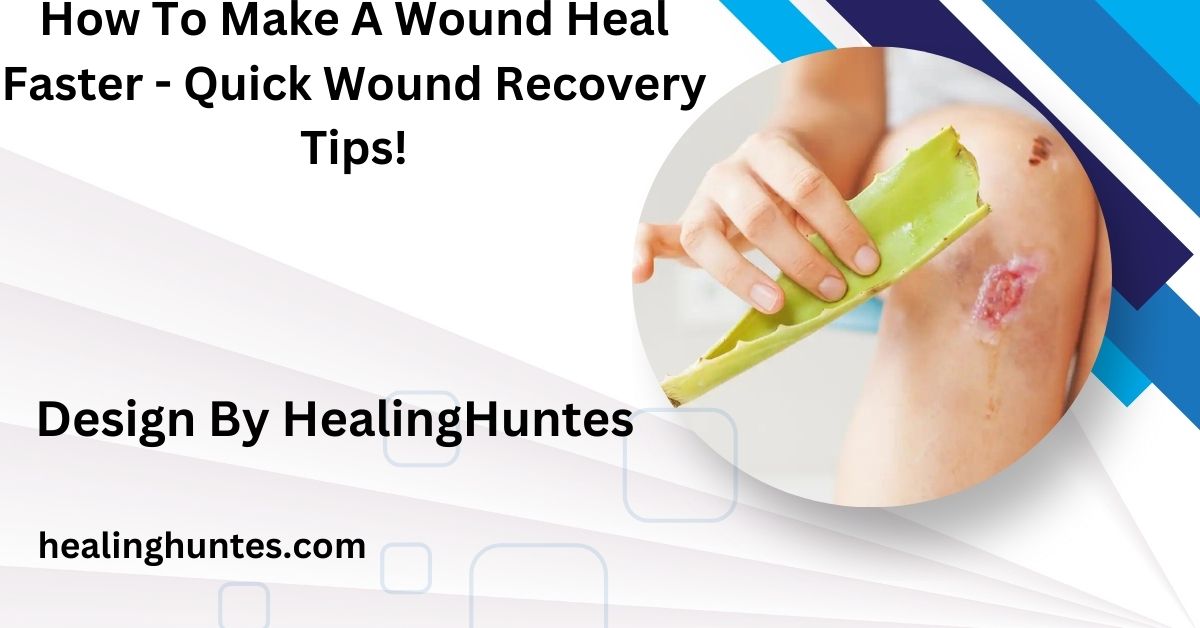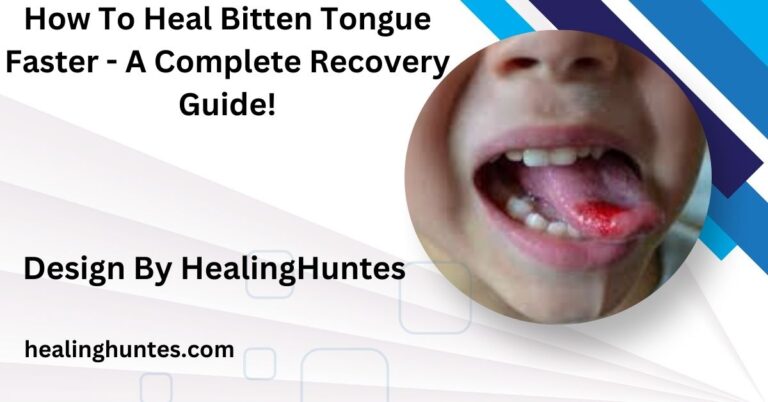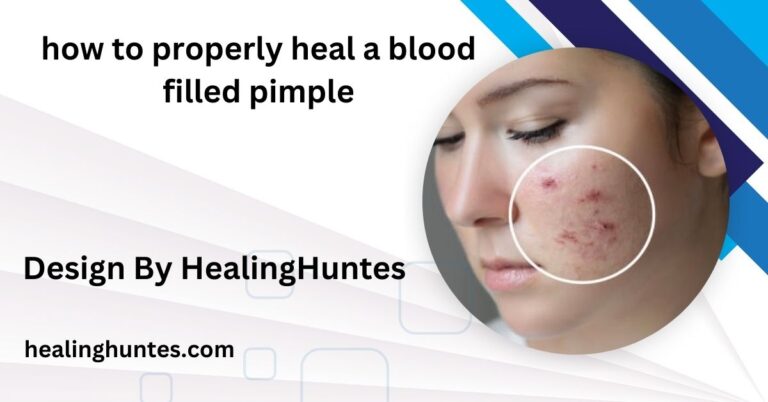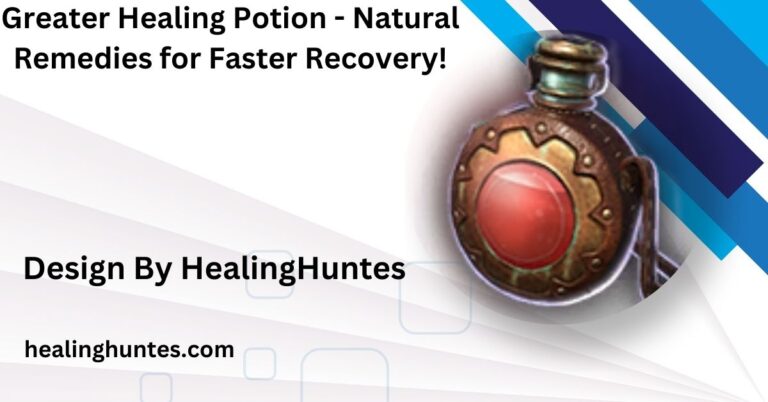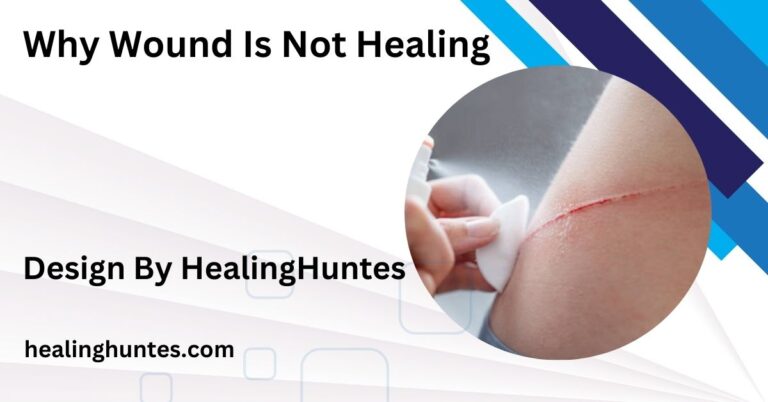How To Make A Wound Heal Faster – Quick Wound Recovery Tips!
Keep wounds clean, moist, and covered; apply ointment, eat nutrient-rich foods, avoid picking, and rest well for faster healing.
In this article, we’ll explore everything you need to know about making a wound heal faster, naturally and safely.
Understanding the Healing Process:
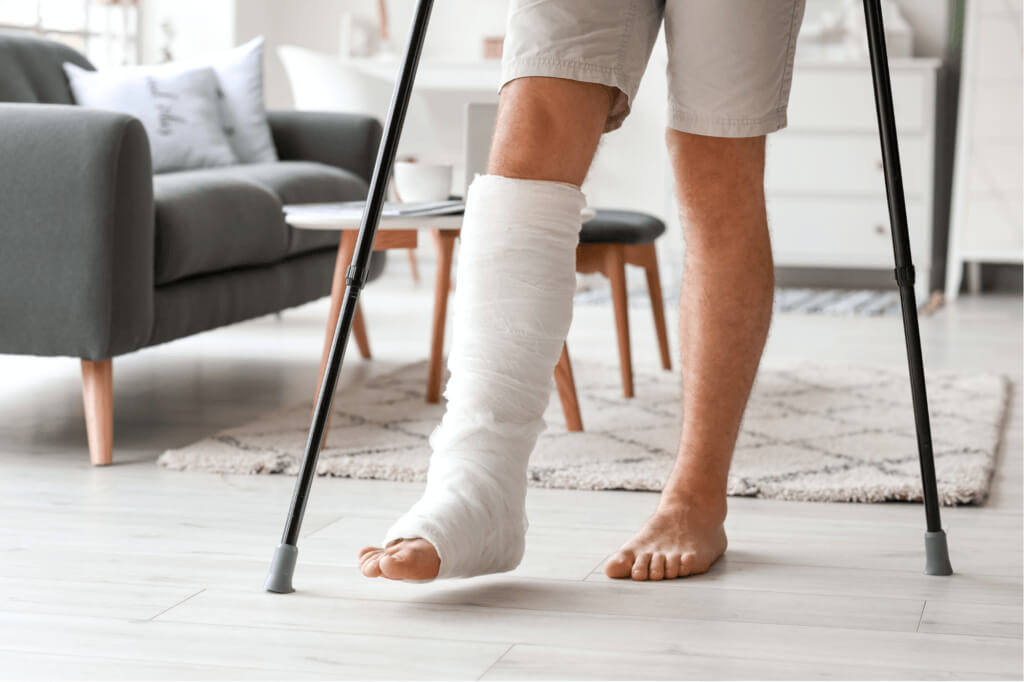
A wound undergoes three key stages of healing:
Inflammation Phase:
This begins immediately after injury. The body sends blood to the wound to clot and prevent further bleeding. White blood cells help fight infection. During this phase, redness, swelling, and warmth around the wound are common as the immune system works to protect the area. Proper cleaning and care are essential during this stage to minimize infection risks.
Proliferation Phase:
New tissue forms as skin cells, blood vessels, and collagen rebuild the damaged area. This phase involves the formation of granulation tissue, which appears as a red, bumpy layer. Maintaining moisture and providing nutrients are crucial to support tissue growth and faster healing.
Remodeling Phase:
The wound closes, and scar tissue forms. This phase can last several weeks or months. The scar tissue strengthens over time, though it may never be as durable as the original skin. Protecting the wound from UV exposure during this phase helps reduce discoloration and scarring.
By supporting these stages with proper care, you can speed up the process.
Also Read: Signs A Fissure Is Healing – Healing Fissure Symptoms!
Step-by-Step Guide to Faster Wound Healing:
Clean the Wound Thoroughly:
Cleaning your wound is the first and most critical step to avoid infection. Use mild soap and lukewarm water or a saline solution to gently wash the area. Pat dry with a clean towel.
What to Avoid:
- Harsh chemicals like hydrogen peroxide can irritate tissue.
- Alcohol, as it dries out the skin.
Pro Tip: For deeper wounds, use an antiseptic solution recommended by your doctor.
Apply an Antibacterial Ointment:
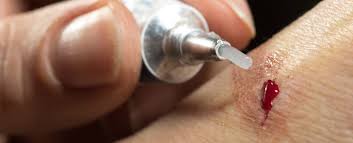
Topical antibiotics like Neosporin or Bacitracin help keep bacteria away, reducing infection risks and promoting healing. Apply a thin layer and cover with a sterile bandage.
Why It’s Important: Ointments maintain a moist environment, which is ideal for faster cell regeneration.
Keep the Wound Moist and Covered:
Modern wound care emphasizes keeping wounds moist to accelerate healing. Cover the area with a sterile, breathable bandage and change it daily or whenever it gets dirty.
Benefits of Moist Wound Healing:
- Speeds up skin cell movement.
- Reduces pain and itching.
- Minimizes scarring.
Use Proper Dressings:
The type of dressing you use matters. For minor wounds, adhesive bandages work well. For larger or deeper wounds, hydrocolloid or hydrogel dressings provide a better healing environment.
Tip: Choose non-stick dressings to avoid damaging the wound during changes.
Also Read: Should I Let Them Heal Doing Exercise – Recovery Exercise Tips!
Boost Healing Through Nutrition:
Healing from within is as important as external care. Your body needs certain nutrients to repair tissue and fight infection.
- Essential Nutrients for Healing:
- Protein: Found in chicken, eggs, fish, and legumes; essential for tissue repair.
- Vitamin C: Boosts collagen production; found in oranges, strawberries, and peppers.
- Zinc: Supports cell growth and repair; found in nuts, seeds, and shellfish.
- Vitamin A: Promotes skin regeneration; found in carrots, spinach, and sweet potatoes.
Hydration: Drink plenty of water to keep skin cells hydrated and promote healing.
Avoid Picking or Scratching:
When a scab forms, it can be tempting to pick at it, but this delays healing and increases the risk of infection and scarring. Let the scab fall off naturally as it protects the wound underneath while new skin forms.
Picking at scabs can reopen the wound, leading to prolonged healing time and potential for larger scars. Keeping the area moisturized can reduce itching and prevent the scab from becoming too dry or tight.
Incorporate Natural Remedies:

Natural ingredients can complement medical treatments.
- Honey: Known for its antibacterial properties, honey creates a protective barrier and keeps the wound moist.
- Aloe Vera: Reduces inflammation and soothes the skin. Apply pure aloe vera gel directly to the wound.
- Coconut Oil: Promotes collagen production and prevents dryness.
- Tea Tree Oil: Has antimicrobial properties; dilute it with a carrier oil before use.
Protect the Wound from Sun Exposure:
UV rays can damage newly formed tissue, leading to hyperpigmentation or scarring. Cover the wound or use sunscreen with at least SPF 30 once the wound begins healing. Using sunscreen regularly not only protects the healing skin but also ensures the scar blends better with surrounding skin over time.
Wearing protective clothing or using a bandage outdoors can provide extra shielding from direct sunlight. Avoid prolonged sun exposure to prevent discoloration and further irritation of the wound area.
Stay Active but Be Careful:
Light movement improves blood circulation, which aids healing by delivering oxygen and nutrients to the wound area. Gentle exercises, such as walking, can boost overall recovery while keeping you active.
However, avoid activities that put pressure on or stretch the wound, as this could delay healing or cause the wound to reopen. Always listen to your body and prioritize rest if you experience discomfort near the injury.
Also Read: How Long Does It Take A Dislocated Shoulder To Heal – Speeding Up Shoulder Recovery!
Get Enough Rest and Manage Stress:
Healing requires energy. Prioritize sleep and relaxation to allow your body to focus on tissue repair. Stress management is equally important since high stress levels can slow down healing. Ensuring you get enough rest supports your immune system and promotes overall health.
Practice relaxation techniques like deep breathing or meditation to reduce stress and enhance recovery. A balanced routine of rest and gentle activity will help your body heal more efficiently.
When to Seek Medical Attention:
Some wounds require professional care. Watch for the following signs:
- Increasing redness or swelling.
- Pus, foul odor, or unusual discharge.
- Fever or chills.
- Wound that don’t improve within 7-10 days.
Preventing Wounds in the Future:
To reduce the risk of wounds:
- Wear protective gear during physical activities.
- Keep your skin moisturized to prevent dryness and cracking.
- Handle sharp objects carefully.
FAQ’s
1. How can I clean a wound effectively?
Wash with mild soap and water or saline solution, then pat it dry with a clean towel. Avoid using hydrogen peroxide or alcohol.
2. Why should wounds stay moist?
Moisture promotes faster healing by encouraging cell regeneration, reducing pain, and minimizing scarring.
3. What foods help heal wounds?
Foods rich in protein, vitamin C, zinc, and vitamin A, like eggs, oranges, nuts, and spinach, support tissue repair and healing.
4. Are natural remedies helpful for wound healing?
Yes, honey, aloe vera, and coconut oil can soothe, moisturize, and protect wounds naturally.
5. When should I consult a doctor for a wound?
Seek medical attention if the wound shows redness, swelling, pus, or doesn’t improve within 7-10 days.
Conclusion
Healing a wound faster involves proper cleaning, dressing, nutrition, and lifestyle changes. With consistent care and attention, most minor wounds will heal in a matter of days. For severe or non-healing wounds, always consult a healthcare professional. By taking proactive steps, you can minimize discomfort, prevent complications, and recover quickly. Stay safe and healthy!
